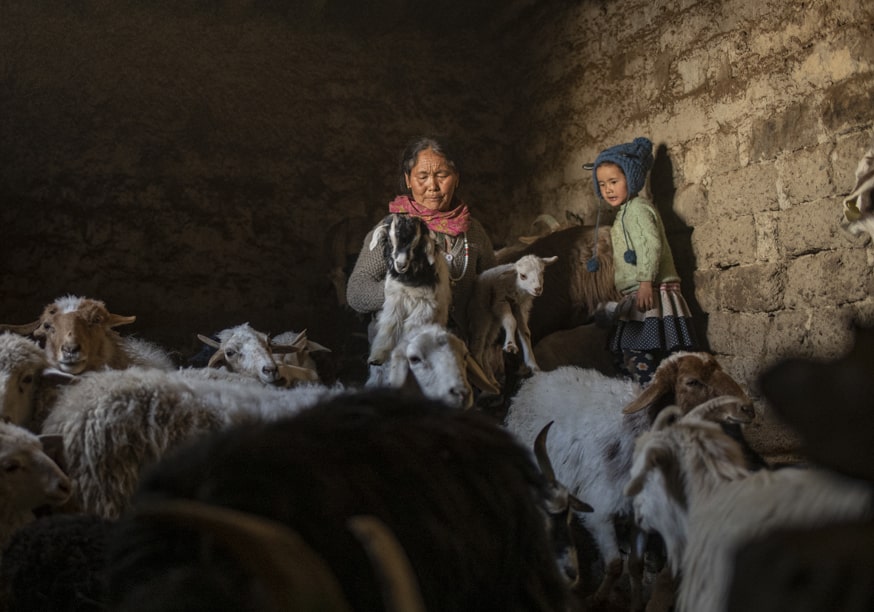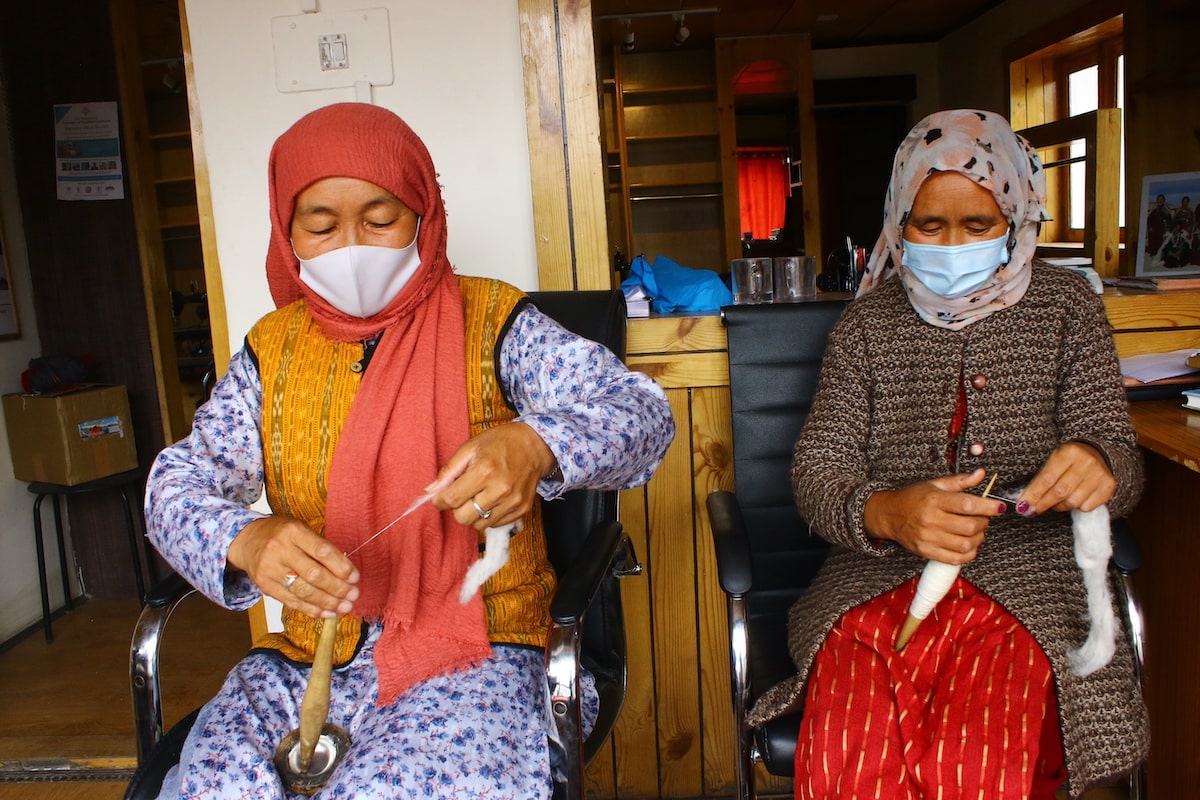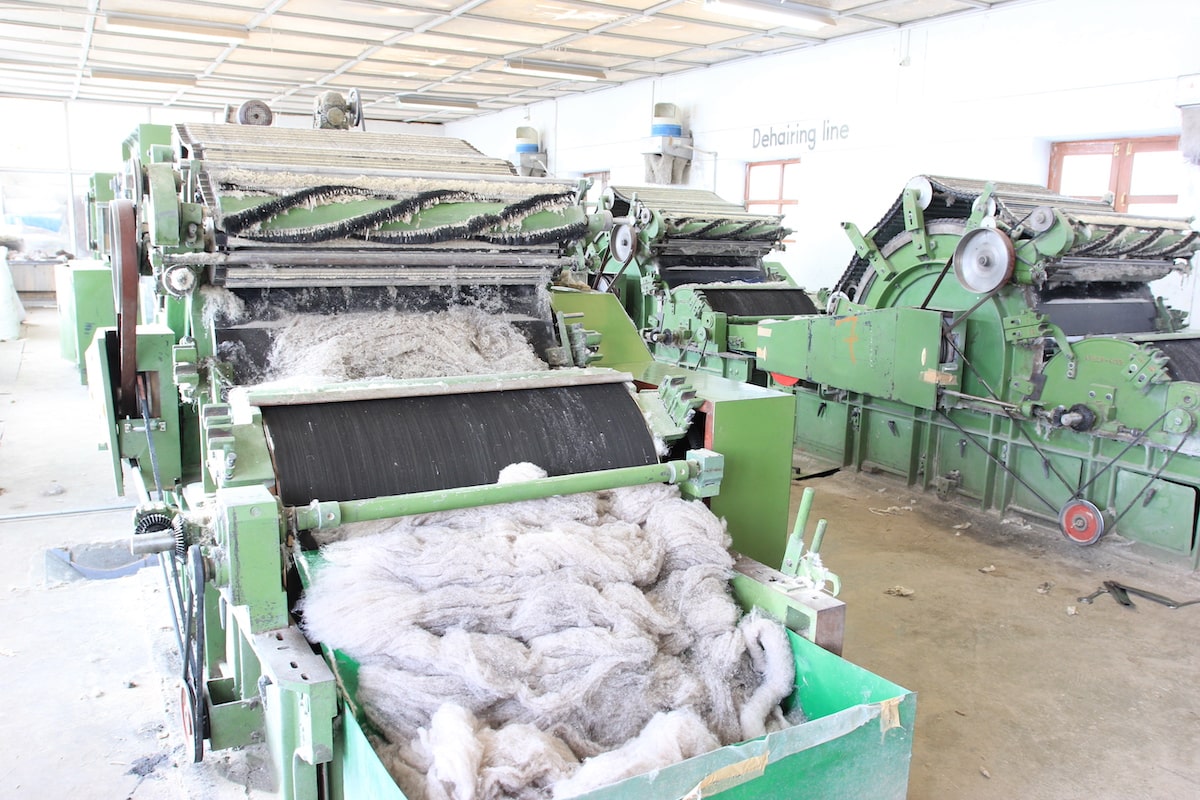
Pashmina Grades
Good quality Pashmina is determined by its length and fibre diameter. Pashminas are graded according to it’s micron width; grade A, B and C and the finest from eastern Ladakh has staple length of 2-3 inch and 12-14 microns. Comparatively the average length of Pashmina in the rest of Ladakh is 1-2 inch with the micron width of 14-15.
Pashmina Types
The Pashmina fibre can either be handspun, handwoven into the final product or it can be spun on a machine and woven into different products.
Hand spun & woven
Machine spun & woven
Hand spun & woven

Hand Spun and Woven
Given its fragility, the fibre is traditionally handspun and handwoven resulting in extra fine, durable and uniquely smooth textured Pashmina shawls. Handspun pashmina renders more soft and durable products.
Machine spun & woven

Machine Spun and Woven
The machine spinning requires strengthening of the yarn by addition of different fibre/chemicals which alters the finesse and durability of the final Pashmina products. Machine spinning can produce more volume in less time.
Hand spun & woven

Given its fragility, the fibre is traditionally handspun and handwoven resulting in extra fine, durable and uniquely smooth textured Pashmina shawls. Handspun pashmina renders more soft and durable products.
Machine spun & woven

The machine spinning requires strengthening of the yarn by addition of different fibre/chemicals which alters the finesse and durability of the final Pashmina products. Machine spinning can produce more volume in less time.
Pashmina Myths and Facts
Myth: Only real Pashmina can pass the ring test
Fact: The Pashmina ring test requires you to pass the shawl through a ring to determine its authenticity. It is said that since the fibre is extremely fine and soft, it is the only fabric that will pass through a ring. However, the claim remains dubious as any soft and lightweight fabric like silk, wool, other synthetic material and the Pashmina replica will pass through a ring. Authentic and good quality Pashmina is determined by its fibre length and diameter which can be tested in the lab. Ladakh Pashmina – one of the finest fibers in the world has a staple length of 2-3 inch and 12-14-microns in width.
Myth: Pashmina contributes to animal cruelty
Fact: The raw Pashmina fibre “pashm” is obtained from the underbelly of Changra goat (Capra hircus). The process of acquiring wool from Pashmina goats is cruelty free as neither the goats are killed nor it is harmed in the process of acquiring it. Due to intense cold, the goats develop thin wool which helps them bear harsh winters. During summer the goats naturally start shedding the wool and it gets combed (May-July) by herders. The wool is gently removed from the body either manually or using a wooden/aluminum comb with large bristles which doesn’t harm the animal. Hence, Pashmina making is responsible & cruelty free.
Myth: Pashmina products are cheap
Fact: This confusion arises from the fact that historically, Pashmina is not a registered fabric and contaminations/mixtures of the product have led to emergence of numerous replicas which contain very less percentage of the Pashmina fibre and are sold at cheap prices in the market. It is often mixed with sheep wool, silk, cotton and synthetics to save on costs. Pure Pashminas are traditionally hand-spun and handcrafted involving meticulous designs which they learned through generations across Pashmina producing landscapes. Since it involves dexterous handicraft skills and produced only in small batches by artisans, the final product is unique and expensive. A pure Pashmina shawl sometimes takes months to be finished.
Myth: Pashmina comes in vibrant multi-colours
Fact: Natural handcrafted Pashmina products come in three primary colors: white, black and brown (beige) owing to the natural hair color of the Changthangi goat. The vibrant hues of reds, blues and green is the result of the dyeing/bleaching process. Pashmina is one of the finest fibre and upon dyeing/bleaching, it loses its softness and becomes stiff. Artisans across the globe prefer neutral shades so as not to alter the natural quality of the fibre and if they are dyeing, they prefer to dye the thread or blend the yarn in different colors rather than doing it on the fabric itself.
Myth: Pashmina comes from Italy
Fact: Italy doesn’t produce any Pashmina directly but remains one of the largest international suppliers of Cashmere goods. They import Chinese, Mongolian and Iranian yarn but the raw fibre originates from Changra goat (parent goat) indigenous to Changthang region of Eastern Ladakh in India. High elevation and freezing cold climate are conducive for obtaining extremely thin fibre known world over for its softness. Despite its place of origin and supreme quality, the Ladakh Pashmina constitutes only 1% of the global Cashmere production.

